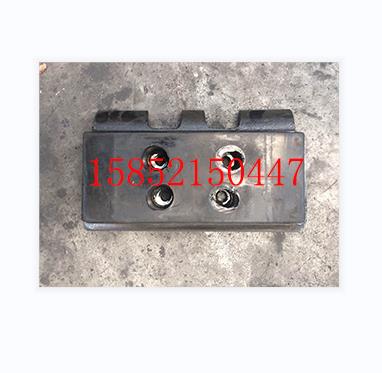


ABG423 Track Shoe
Wear pattern of track shoes
During normal operation, the track pin slowly rotates backwards in the pin hole, and both wear evenly. The pin hole gradually becomes larger and the pin gradually becomes thinner. If the operation is improper, such as turning at high speed, starting suddenly, or entering muddy water, weeds, etc., and the pin is blocked, the left and right sides of the track shoe will be pressed too heavily and bent downward, the pin will be deformed and bent, and cannot rotate in the pin hole. The pin and pin hole will become sliding friction, and the friction parts are limited to a small part of the contact surface. The pin will gradually grind into a crank shape, and the pin hole will also become oval. The increase in the pin hole also causes the track pitch to lengthen (the pitch refers to the center distance between the holes on both ends of the track shoe), causing the track shoe and the driving wheel to gnaw and grind each other, causing the track shoe to be worn through, and the driving wheel teeth to be in the shape of a blade. According to the measurement, when the pitch changes from 174 millimeters to 184 millimeters, the opening width of the drive wheel teeth changes from 87 millimeters to 97 millimeters, and normal rolling engagement is completely disrupted.
Due to the elongation of the track shoe pitch, it also causes the supporting wheels to jump during walking, accelerating the wear of the track shoe runway section. When the subsidence of the runway is greater than 4mm, it should be repaired.
The wear of the guide part of the track shoe is mainly caused by the deviation of the track, severe deformation of the track shoe, and excessive axial shaking of the supporting and guiding wheels.
Common scrapped track shoes are severely worn or worn through in the meshing area with the driving wheel.
Tel: 15852150447 (WeChat)